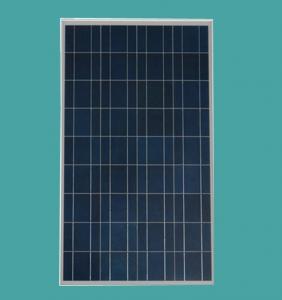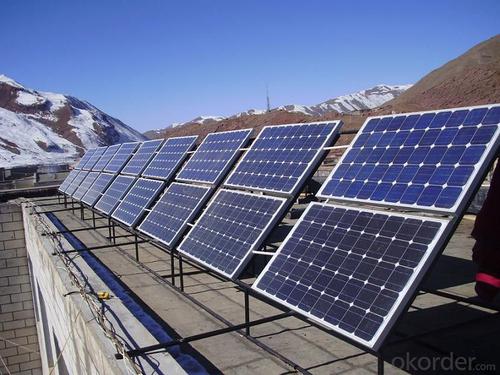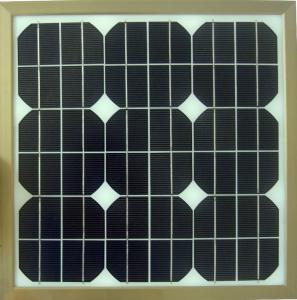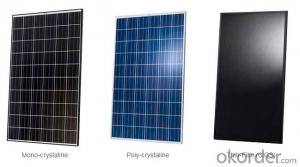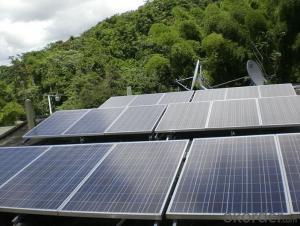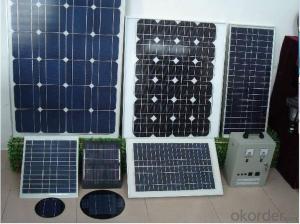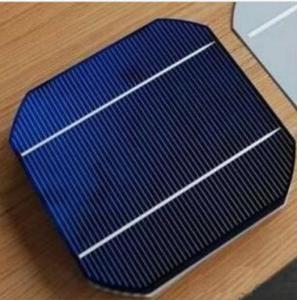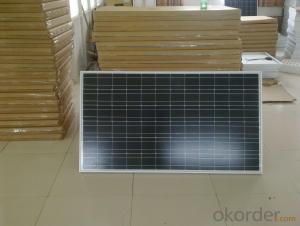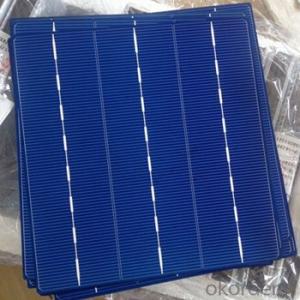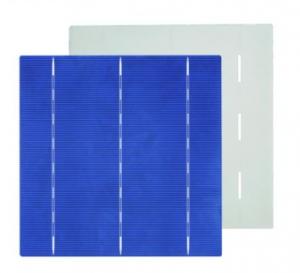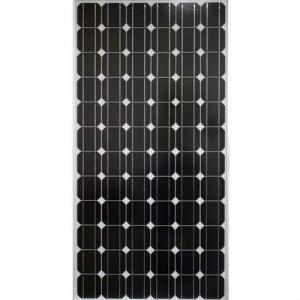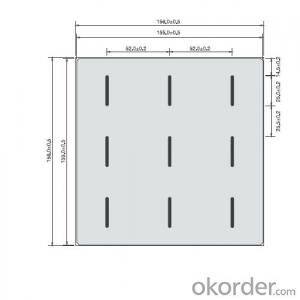Solar Cells Amazon - Monocrystalline Solar Cells for Solar Panels Energy Product System with TUV, MCS Certificate
- Loading Port:
- Tianjin
- Payment Terms:
- TT or LC
- Min Order Qty:
- 10 m²
- Supply Capability:
- 1000 m²/month
OKorder Service Pledge
OKorder Financial Service
You Might Also Like
Specifications
1.Solar panel energy system power from 165W-195W
2.100% TUV standard flash test
3.Certificate:TUV,UL,MCS
4.Quality Insurance
100% TUV standard flash test mono solar panel energy product system
1.What is 100% TUV standard flash test?
Flash test machine with TUV standard reference solar panel,all Propsolar Panel is tested with 100% TUV standard or standard higher than TUV standard
In the market,not all solar panel is real tested with TUV standard,Flash machine reference panel is not TUV standard,so the power is 2%-3% less than TUV standard.
2.Solar Panel Warranty
1)10 years limited manufacturing warranty
2)12 years for 90% of warranted minimum power
3)25 years for 80% of warranted minimum power
3.Solar Panel Electric Characteristics
CELL TYPE | 125 X 125 MONO SOLAR CELL | ||||||
ITEM | PS-M572165 | PS-M572170 | PS-M572175 | PS-M572180 | PS-M572185 | PS-M572190 | PS-M572195 |
Maximum Power(Wp) | 169.9 | 174.9 | 179.9 | 184.9 | 189.9 | 194.9 | 199.9 |
Open circuit Voltage (Voc) | 43.3 | 43.7 | 44.0 | 44.5 | 44.9 | 45.2 | 45.5 |
Short circuit Current (Isc) | 5.05 | 5.25 | 5.40 | 5.45 | 5.55 | 5.60 | 5.80 |
Maximum Power Voltage (Vm) | 35.3 | 35.5 | 35.6 | 36.0 | 36.3 | 36.5 | 36.7 |
Maximum Power Current (Im) | 4.67 | 4.79 | 4.92 | 5.00 | 5.10 | 5.21 | 5.31 |
Cell Efficiency [%] | 15.85 | 16.33 | 16.81 | 17.28 | 17.77 | 18.25 | 18.74 |
Module Efficiency [%] | 12.88 | 13.27 | 13.66 | 14.05 | 14.44 | 14.83 | 15.22 |

More Details:
Depending on construction, photovoltaic modules can produce electricity from a range of frequencies of light, but usually cannot cover the entire solar range (specifically, ultraviolet, infrared and low or diffused light). Hence, much of the incident sunlight energy is wasted by solar modules, and they can give far higher efficiencies if illuminated with monochromatic light. Therefore, another design concept is to split the light into different wavelength ranges and direct the beams onto different cells tuned to those ranges.[citation needed] This has been projected to be capable of raising efficiency by 50%. Scientists from Spectrolab, a subsidiary of Boeing, have reported development of multijunction solar cells with an efficiency of more than 40%, a new world record for solar photovoltaic cells.[3] The Spectrolab scientists also predict that concentrator solar cells could achieve efficiencies of more than 45% or even 50% in the future, with theoretical efficiencies being about 58% in cells with more than three junctions.
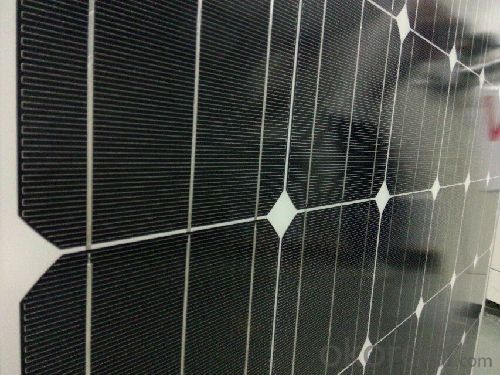
The life of the solar panels is determined by the Solar Energy Solar Cells, tempered glass, EVA, TPT and other materials, usually with better materials manufacturers panels made out of life can reach 25 years, but with the impact on the environment, solar cell board materials will change with time and aging. Normally used in 20 years of power will decay by 30%, it will be used in 25-year power attenuation of 70%.
Inspection and Maintenance of Solar Energy Solar Cells:
1. Check whether the damaged Solar Energy Solar Cells, to be promptly found and replaced.
2. Check the battery cables and the ground plate is good contact, without loss phenomenon.
3. Check the wiring at the combiner box if there is fever phenomenon.
4. Check the battery plate bracket loose and breakage.
5. Cleaning up around the panels shielding panels weeds.
6. Check whether the panel surface coverings.
7. Check the battery guano on the plate surface, and clean it if necessary.
8. The cleanliness of the panels were identified.
9. Windy weather to deal with solar panels and frame to conduct audits.
10. Snow days to respond in a timely manner to clean up the panel, the panel surface to avoid the frozen snow.
11. Heavy rain should check all waterproof seal is good, whether the water leakage.
12. Check if there are animals into the power station to the battery plate damage.
13. Hail response panel surface to conduct audits.
14. The battery plate temperature is detected, and the ambient temperature is compared for analysis.
15. Check it out on the issues to be addressed promptly analyzed and summarized.
16. To do detailed records of each inspection, in order to analyze later.
17. Summary records for analysis and archiving.
- Q: Can solar cells be used in cloudy or rainy weather?
- Yes, solar cells can still be used in cloudy or rainy weather, although their efficiency will be reduced. While solar cells generate less electricity under such conditions due to reduced sunlight intensity, they can still produce some power. Additionally, advancements in solar technology have improved the ability of solar cells to capture diffused and indirect sunlight, making them more viable in less optimal weather conditions.
- Q: What is the impact of algae growth on solar cell performance?
- The impact of algae growth on solar cell performance is generally negative. Algae growth on the surface of solar cells can reduce their efficiency by blocking sunlight and causing shading. This reduces the amount of light that reaches the solar cells, thereby reducing their power output. Additionally, algae can also produce a biofilm that affects the surface properties of the solar cells, leading to further degradation in performance over time. Therefore, it is important to regularly clean and maintain solar panels to minimize the negative effects of algae growth.
- Q: Can solar cells be used to power parking meters?
- Yes, solar cells can be used to power parking meters. They can efficiently convert sunlight into electricity, providing a sustainable and reliable source of power for parking meters without the need for continuous grid connection or batteries.
- Q: Can solar cells be used to power water treatment plants?
- Yes, solar cells can be used to power water treatment plants. Solar energy can be harnessed to generate electricity, which can then be used to power the various processes involved in water treatment, such as pumping, filtration, and disinfection. Solar-powered water treatment plants are an environmentally friendly and sustainable solution, especially in remote areas where access to grid electricity may be limited.
- Q: Can solar cells be used in remote areas with no access to electricity?
- Yes, solar cells can be used in remote areas with no access to electricity. Solar cells convert sunlight into electricity, making them a reliable and sustainable source of power in areas where grid connectivity is absent. They are particularly well-suited for remote locations due to their portability, low maintenance requirements, and ability to generate electricity even in harsh environmental conditions.
- Q: Are solar cells affected by electromagnetic radiation?
- Yes, solar cells are indeed affected by electromagnetic radiation. They are designed to convert sunlight, which is a form of electromagnetic radiation, into electricity.
- Q: Can solar cells be used for powering hospitals?
- Yes, solar cells can be used to power hospitals. Solar energy can be harnessed through solar panels or solar cells, and these can generate electricity to meet the power needs of hospitals. By utilizing solar power, hospitals can reduce their reliance on traditional energy sources, lower their operating costs, and contribute to a cleaner and more sustainable environment. However, the feasibility of using solar cells for powering hospitals depends on factors such as the hospital's energy demand, available space for solar panels, and the region's sunlight availability.
- Q: What is the environmental impact of solar cell production?
- The environmental impact of solar cell production is relatively low compared to other forms of energy production. The manufacturing process of solar cells does generate some greenhouse gas emissions and other pollutants, but these emissions are significantly lower compared to traditional fossil fuel-based energy sources. Additionally, the use of solar energy helps reduce carbon dioxide emissions and dependence on fossil fuels, thereby mitigating climate change and promoting a cleaner and more sustainable future.
- Q: What is the role of solar cells in powering electric vehicles?
- Solar cells play a crucial role in powering electric vehicles by converting sunlight into electricity. They are typically installed on the surface of the vehicle, such as the roof or hood, and capture solar energy to charge the vehicle's battery. While solar cells alone may not provide sufficient power to fully drive an electric vehicle, they can help extend its range and reduce dependence on the electrical grid.
- Q: Can solar cells be used in cold climates?
- Yes, solar cells can be used in cold climates. While they may not perform at their maximum efficiency in extremely cold temperatures, modern solar cell technology has advanced to be able to generate electricity even in low light and cold conditions. Additionally, snow on solar panels can be easily cleared to ensure proper functioning.
Send your message to us
Solar Cells Amazon - Monocrystalline Solar Cells for Solar Panels Energy Product System with TUV, MCS Certificate
- Loading Port:
- Tianjin
- Payment Terms:
- TT or LC
- Min Order Qty:
- 10 m²
- Supply Capability:
- 1000 m²/month
OKorder Service Pledge
OKorder Financial Service
Similar products
Hot products
Hot Searches
Related keywords

